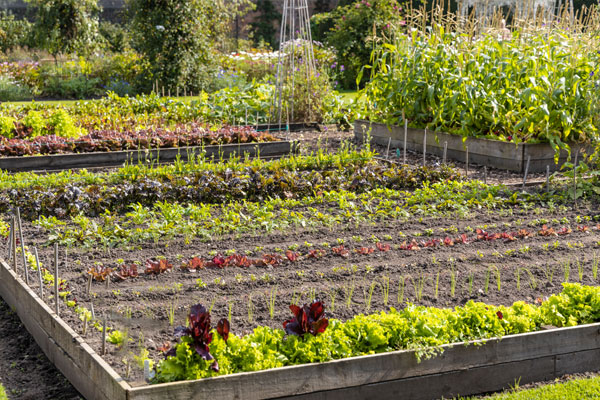Creating a flourishing homestead is a dream for many aspiring homesteaders. If you’re lucky enough to have 15 acres at your disposal, the possibilities are endless. However, managing such a large expanse requires thoughtful planning and sustainable practices. Using organic methods can ensure your homestead remains productive and environmentally friendly for years to come.

Embracing Organic Methods
At the heart of a thriving homestead is a commitment to organic methods. These practices not only promote healthy soil and crops but also foster a balanced ecosystem. By avoiding synthetic chemicals and fertilizers, you can create a self-sustaining environment that supports a diverse array of plants and animals.
Soil Health and Management
Healthy soil is the foundation of any successful homestead. Begin by conducting a soil test to understand its composition and nutrient levels. Incorporate organic matter such as compost and cover crops to enhance its fertility. These organic methods improve soil structure and provide essential nutrients for your plants.
Crop Rotation and Diversity
Practicing crop rotation is crucial for maintaining soil health and preventing pest infestations. By rotating crops with different nutrient needs, you can avoid depleting the soil and reduce the risk of disease. Additionally, diversifying your crops increases resilience against pests and weather fluctuations.
Water Management
Efficiently managing water resources is vital for a sustainable homestead. Implementing rainwater harvesting systems and drip irrigation can significantly reduce water waste. These organic methods ensure that your crops receive adequate moisture without depleting local water sources.
Rainwater Harvesting
Set up rain barrels or larger cisterns to collect rainwater from your roof. This stored water can be used for irrigation during dry spells, reducing reliance on municipal water supplies.
Irrigation Techniques
Drip irrigation systems deliver water directly to the plant roots, minimizing evaporation and runoff. This technique conserves water while ensuring your plants receive the necessary hydration.
Pest Management
Maintaining a balance between crops and pests is essential. By adopting organic methods, you can naturally control pest populations without harming beneficial insects or the environment.
Companion Planting
Companion planting involves growing plants together that benefit each other. For example, marigolds can repel nematodes, while basil enhances the growth of tomatoes. This practice reduces pest pressure and promotes plant health.
Natural Predators
Encourage natural predators, such as ladybugs and birds, to inhabit your homestead. These predators help control pest populations, reducing the need for chemical interventions.
Animal Husbandry
Incorporating animals into your homestead can enhance productivity and sustainability. Whether raising chickens for eggs or goats for milk, animals provide valuable resources and contribute to the homestead’s ecosystem.
Choosing Livestock
Select livestock that suits your homestead’s environment and goals. Chickens, goats, and bees are popular choices for their contributions to food production and pollination.
Sustainable Practices
Implement rotational grazing and provide organic feed to maintain the health and productivity of your livestock. These practices align with organic methods and ensure the well-being of your animals.
Energy Efficiency
Adopting energy-efficient practices is crucial for reducing the environmental impact of your homestead. Consider renewable energy sources and efficient use of resources.
Solar Power
Installing solar panels can significantly reduce your reliance on external energy sources. This sustainable energy solution powers your homestead while minimizing your carbon footprint.
Energy Conservation
Implementing energy-efficient appliances and practices, such as LED lighting and proper insulation, can further reduce energy consumption and costs.
Community and Education
Sharing knowledge and resources with your community can enhance the sustainability of your homestead. Participate in local workshops and collaborate with fellow homesteaders to exchange ideas and solutions.
Workshops and Events
Host or attend workshops on organic methods and sustainable living to learn and share valuable insights with others. This fosters a sense of community and encourages continuous learning.
Online Resources
Utilize online platforms and forums to connect with other homesteaders. Websites like Joe Gardener offer valuable information and support for those interested in homesteading.
Conclusion
Incorporating organic methods into your 15-acre homestead can lead to a sustainable and productive environment. By focusing on soil health, water management, pest control, and energy efficiency, you can create a thriving ecosystem that benefits both you and the planet. For more tips on managing a homestead, visit Erosion Control and Winter Prep.

FAQ
What are the benefits of organic farming?
Organic farming promotes soil health, biodiversity, and reduces reliance on synthetic chemicals, resulting in healthier produce and a more sustainable environment.
How can I improve soil fertility naturally?
Incorporate organic matter such as compost and cover crops into your soil. These materials enhance fertility and provide essential nutrients for plant growth.
Why is crop rotation important?
Crop rotation prevents soil nutrient depletion and reduces the risk of pest infestations and diseases, leading to a healthier and more productive garden.





